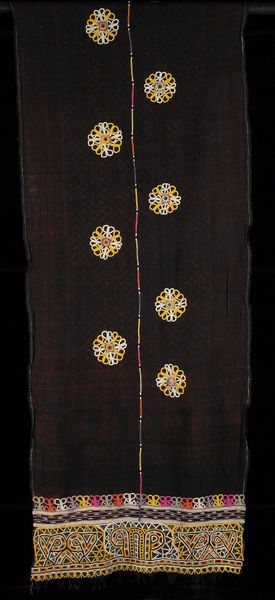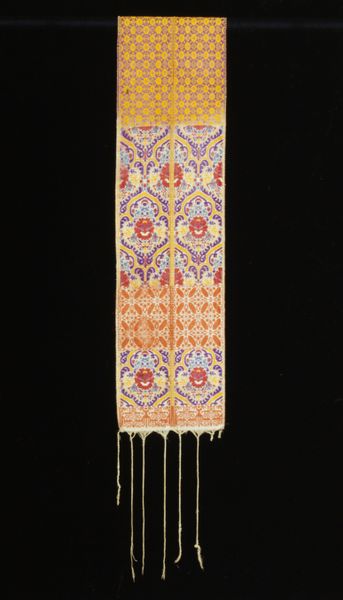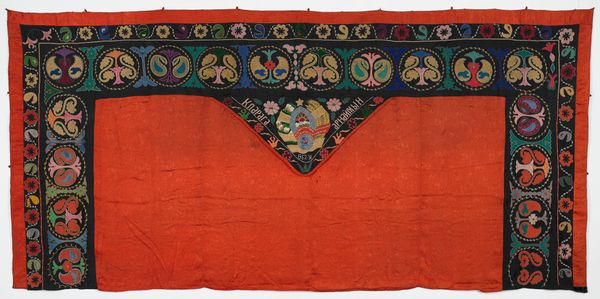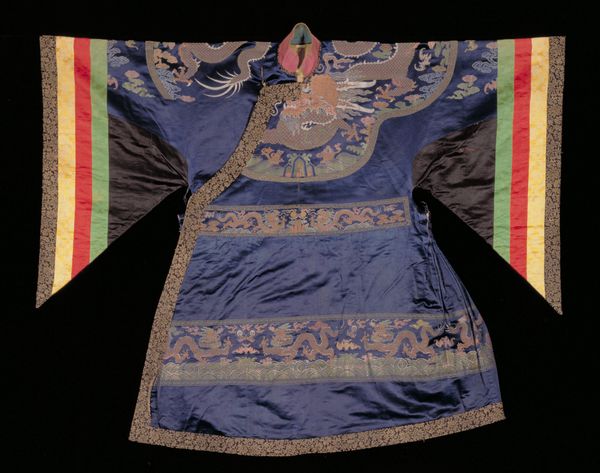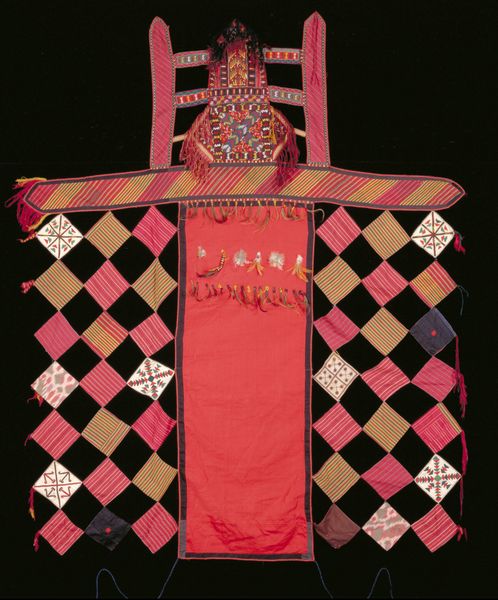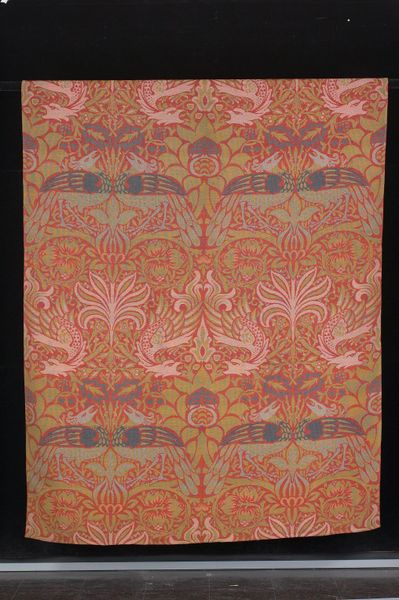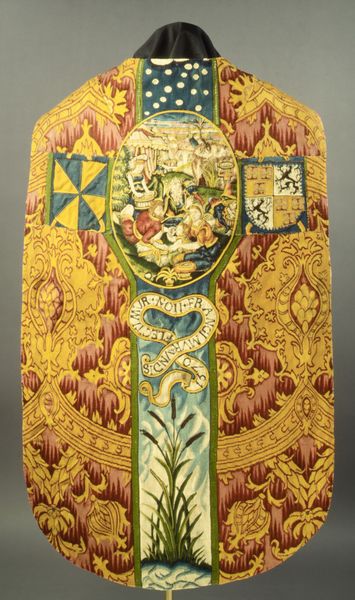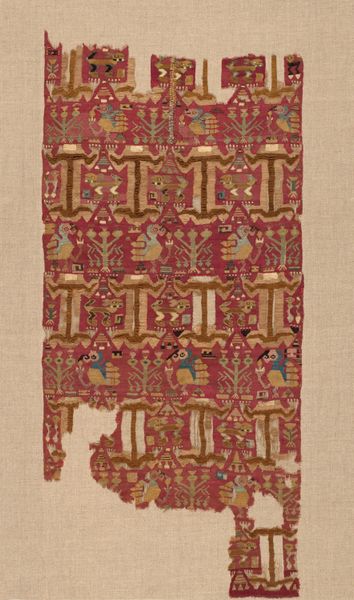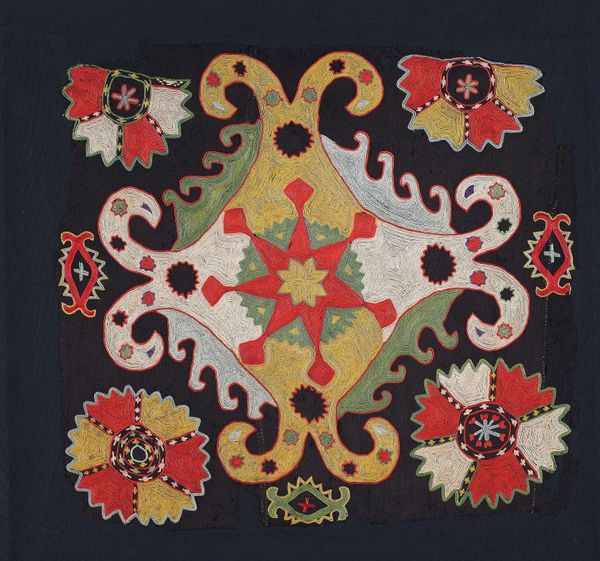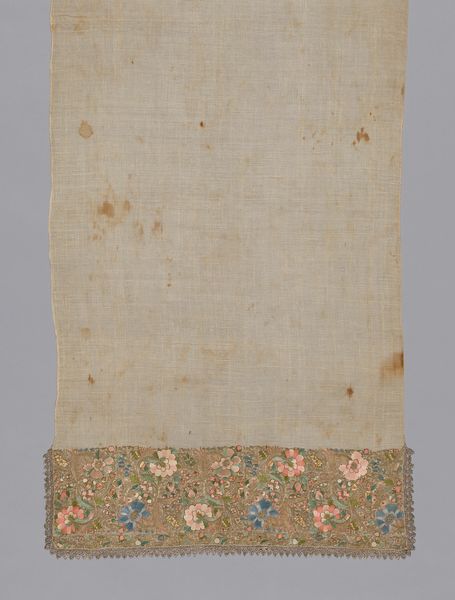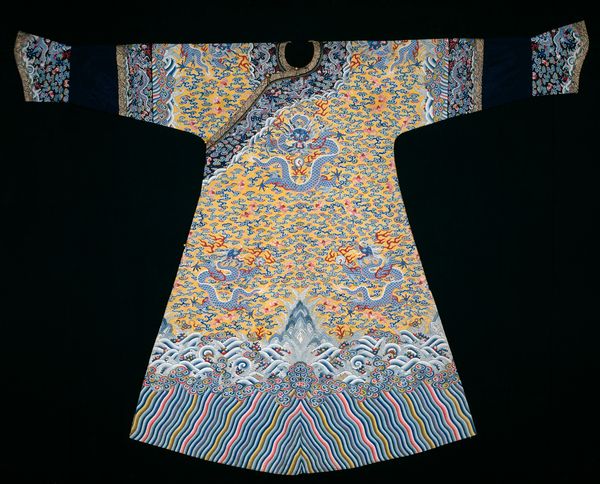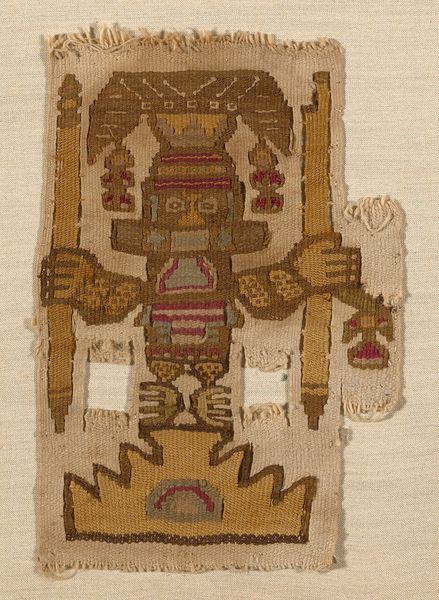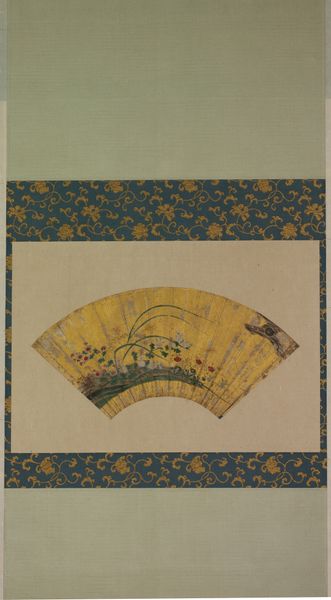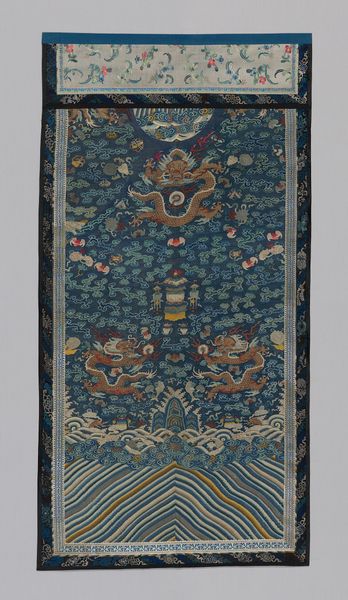
drawing, textile
#
drawing
#
asian-art
#
textile
#
folk art
#
geometric pattern
#
folk-art
#
naive art
#
decorative-art
#
decorative art
Dimensions: 70 x 24 in. (177.8 x 60.96 cm)
Copyright: Public Domain
This temple banner was made by an anonymous artist, and its date of creation is unknown. While the identity of the artist and precise dating remain a mystery, the banner offers us insight into Tibetan Buddhist artistic and cultural traditions. The banner’s imagery, featuring a wrathful deity, is no accident; it reflects the protective function of such banners within the temple setting. Its vibrant colors and intricate embroidery, with the monster face at the top and colorful silk panels hanging down below, were designed to inspire reverence and awe. We can only guess about the precise history of the workshop where it was made. Was it supported by a monastery, a wealthy family or a local community? The art market was not always in play. By studying surviving examples of Tibetan art, craft, and religious practices, historians piece together the cultural, economic, and religious influences that shaped this banner. The banner serves as a reminder that art is deeply embedded in social and institutional contexts.
Comments
minneapolisinstituteofart almost 2 years ago
⋮
The Tibetan priesthood extensively used imported silks from China to decorate their monasteries. Temple interiors were exceptionally colorful with their silk canopies, banners, and altar frontals. This banner is typical of those that were suspended from pillars or hung from roof brackets in image rooms and lecture halls. The lower section, made from several different types of silk fragments, has such auspicious Chinese motifs as dragons, clouds, bats, and lotus flowers. Like most Tibetan banners, however, the top is dominated by a large stylized lion mask in silk appliqué. This angry manifestation protects both Buddhist doctrine and the temple where it was displayed. The mask, in turn, is topped by a circular mirror, the standard reminder that the reality we see is an illusion.
Join the conversation
Join millions of artists and users on Artera today and experience the ultimate creative platform.
